Policymakers want to force Australians to live in high-rise apartment towers on the false assumption that they will improve affordability.
However, the assumption is false, with Australian Bureau of Statistics (ABS) data showing that building a small apartment is more expensive than building a detached house (even higher on a square metre basis).
The following chart from Michael Matusik illustrates the problem.
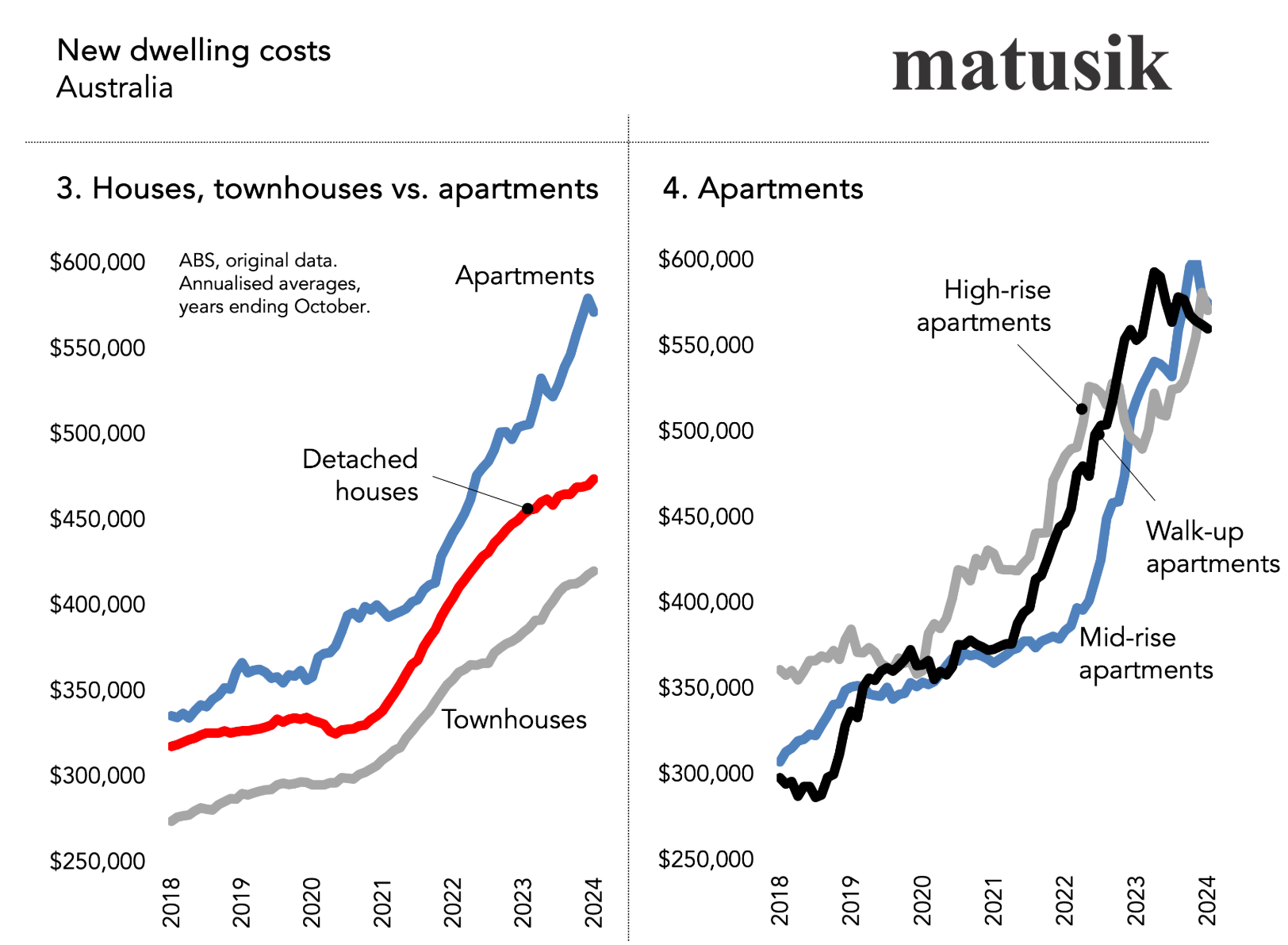
“Whilst all building costs have risen over the past five years, new apartment builds – regardless of type – have seen a rapid escalation in construction costs”, notes Matusik.
“There are many reasons why, including union-related thuggery, a shortage of skilled labour and limited interest from tier one and two builders. Also there aren’t enough of these builders to go around these days”.
“Moreover, many new apartment projects—sell-off plan – but don’t actually get built”, he said.
The prohibitive cost of building apartments explains why construction rates have collapsed, with overall annual approvals down 52% from the peak.
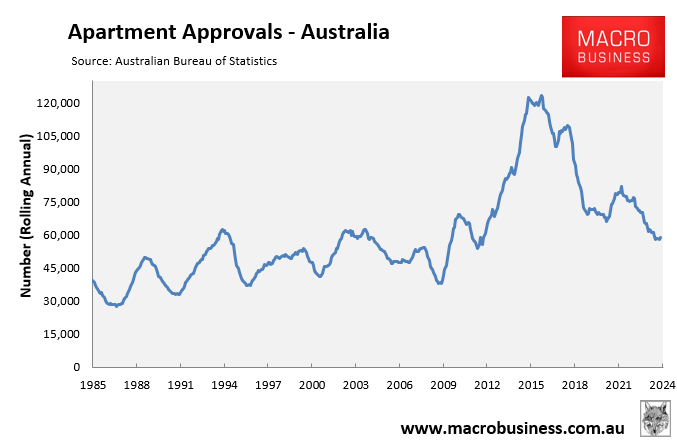
High-rise apartment approvals have fallen even more sharply, down more than 60% from the peak.
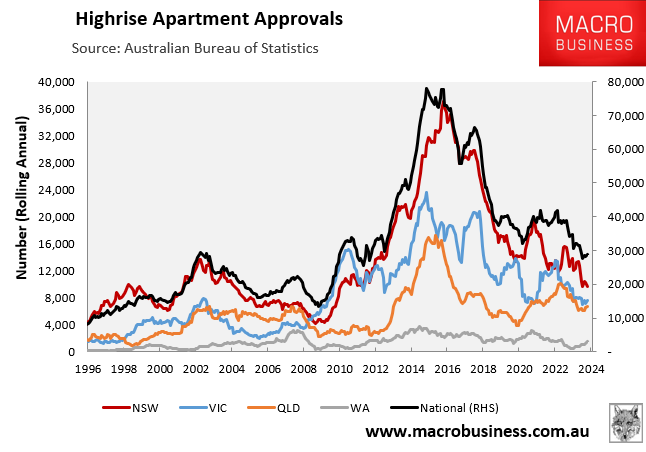
In October, CBRE forecast that Australia would only build around 50,000 apartments annually between 2025 and 2029, around half the level of the 2017 peak.
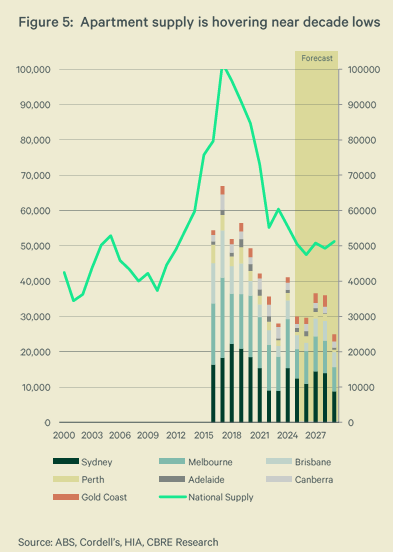
CBRE said that apartment prices needed to catch up with rising construction costs to make construction feasible for developers.
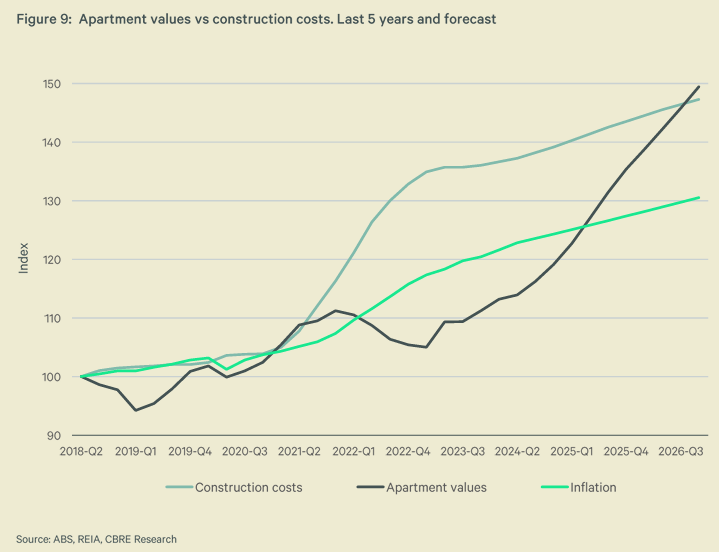
“That disparity [between prices and costs] is currently at 23%”, said Sameer Chopra from CBRE. “We expect this gap to close out and revert to a premium”.
“In our view, apartment values will need to accelerate significantly higher to entice developers”, he said.
Separately, Charter Keck Cramer stated that apartment prices for new and established stock needed to rise to entice development. However, this would price many would-be buyers out.
“Because building costs have jumped by 30% to 40%, prices have to basically go up to be about 30% higher compared to pre-pandemic levels”, Charter Keck Cramer national executive director of research Richard Temlett said.
“The prices of established units need to recalibrate upwards by around 15% for new stock to be accepted by the market at current price points”.
Clearly, the notion that by building lots of apartments, affordability would improve is false.
There are also serious concerns around the build quality of new apartments, alongside excessive strata fees.
The reality is that Australia would not need to transform its cities into high-rise slums if the federal government grew the population slowly via moderate levels of net overseas migration (NOM).

The cheapest, easiest, and fastest solution to Australia’s housing supply problem is to reduce net overseas migration to a level that is well below the capacity to supply housing and infrastructure.
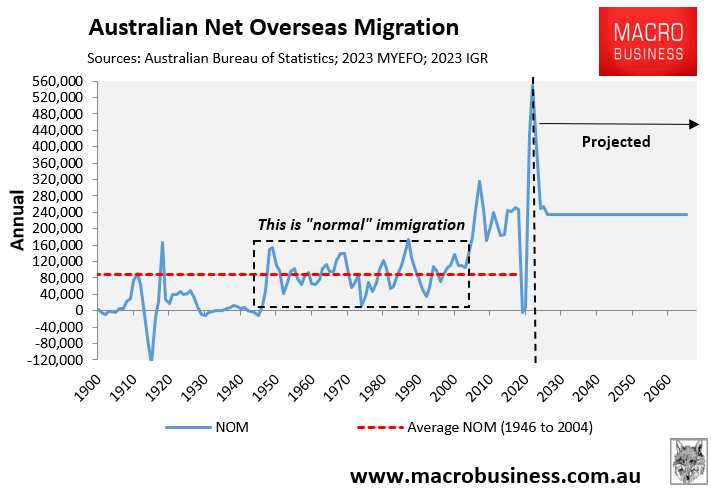
Australia’s housing crisis is a problem of excessive population demand, not insufficient supply.

